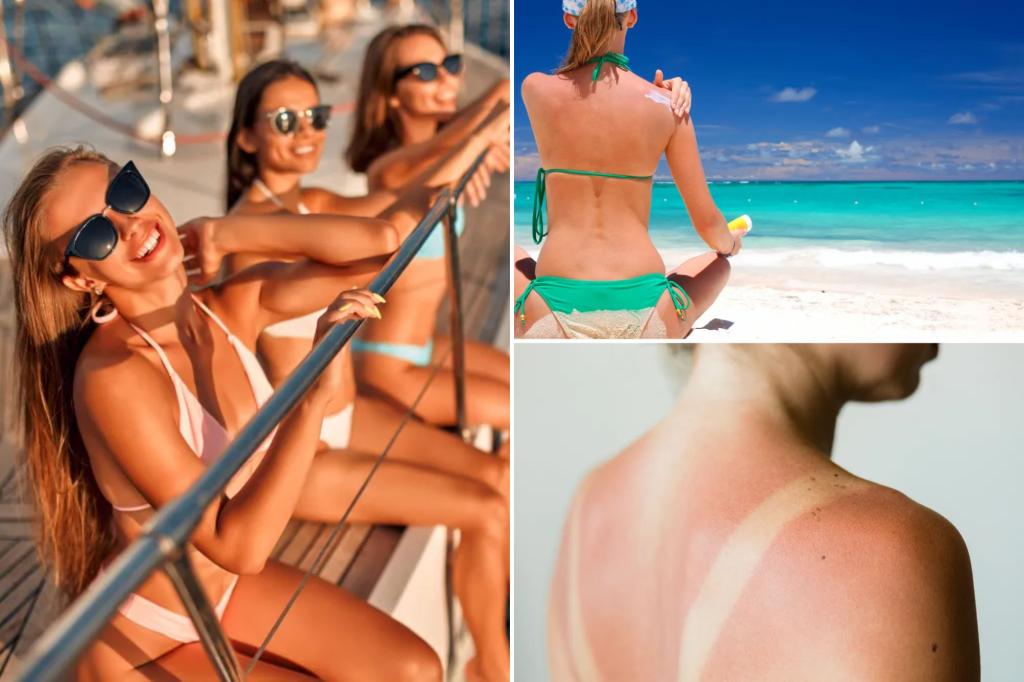Summarize this content to 2000 words in 6 paragraphs
By now, we should all know that there’s nothing healthy about a tan.
But, it seems Gen Z never got the memo, with a new and concerning trend around tanning emerging.
Experts are now pushing young people to practice sun safety – with part of the responsibility falling in the hands of parents.
The dangerous trend
Across platforms like Instagram and TikTok, influencers have begun not only promoting skincare routines and makeup routines, but now tanning routines.
Videos of young women using tanning oils and monitoring the UV index – a measurement of the strength of the sunburn-producing ultraviolet radiation at a particular place and time – to use it as a tool, rather than a warning, are going viral, encouraging others to intentionally burn tanlines into their skin for aesthetic purposes.
Professor Anne Cust, Chair of Cancer Council’s National Skin Cancer Committee, said that this is incredibly worrying to see.
“It is very concerning to see this glamourization of suntanning culture, where young people believe tan lines are desirable and are on social media are seeking sunburns and suntans,” she said.
“This behavior is dangerous as young people are purposefully exposing themselves to harmful ultraviolet (UV) radiation and putting themselves at an increased risk of developing skin cancer.”
Professor Cust noted that research shows almost 1 in 3 young Australians believe it’s fine to suntan at their age, and alarmingly, fewer than 1 in 10 are consistently using all five forms of sun protection.
How can we stop it?
Whilst Australia has the highest rate of skin cancer in the world, fortunately, it is almost entirely preventable.
It’s because of this that Cancer Council has some pretty straightforward advice when it comes to protecting your skin – slip on protective clothing, slop on broad-spectrum, water-resistant SPF50 or SPF50+ sunscreen, slap on a broad-brimmed hat, seek shade and slide on sunglasses.
This goes for any day when the UV index is at a level 3 or above – which indicates a moderate to high risk of harm, even if it looks cloudy and dreary outside.
Making sunscreen cool
If you’re reading this knowing that your child is going to come back to you saying that wearing anything but a bikini to the beach isn’t cool (because we’ve all been there, sorry mum!), know that there can be a better way to go about it.
According to Professor Cust, it’s all about making your teen confident enough to embrace their natural skin tone, and make sun protection a regular part of their daily routine – just like skincare.
“We want young people to feel empowered to be the ones to stop skin cancer trending,” she said.
“We encourage parents to speak to their children about sun protection as a way of looking after their skin and to make it a part of their daily routine. By being sun safe now their future selves (and their skin) will thank them.
“It can be as simple as reminding them to use and keep sun protective measures close at hand. These reminders can be to apply sunscreen 20 minutes before getting in the pool and after towel drying; to pop on a hat, sunglasses and a long-sleeve shirt before going out with their friends; to keep extra sunglasses and sunscreen in their everyday bag; and to check the UV index before heading outdoors to play.”
Being a good role model is also key in helping to develop these habits in younger children.
“Parents can look to support their children in building sun protection habits and being comfortable in their own skin by reinforcing these behaviors, and a way to do this is by demonstrating these behaviors themselves in front of them,” she said.
Knowing the stats can also make a huge difference. Whilst it’s not common to be diagnosed with skin cancer at a young age, it’s certainly not impossible.
“Research shows most young Australians (74%) believe their risk of getting skin cancer is unlikely. While it’s true that most people diagnosed with skin cancer are over 40, it’s important for young Australians to understand the impact of the sun protection behaviors they are developing now,” Professor Cust said.
“The more you are exposed to UV at a young age, the higher your risk of premature aging and developing skin cancer when you get older.”


